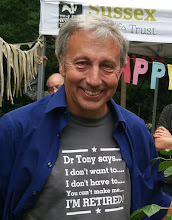Five
Members of Parliament were on the platform, and three more sent messages of
support, at a mass protest meeting on Saturday 22 November organised by the
Gatwick Area Conservation Campaign (GACC).
That is all the MPs from around Gatwick, and helps to disprove
the assumption in some national newspapers that Gatwick would politically be
the easiest option for a new runway.
The
MPs were united in expressing their concern about new flight paths and about
the threat of a second runway. Extracts
from their speeches and messages are attached.
Over
1,000 people crammed into the Apple Tree Centre in Crawley ,
and were welcomed by three racy air hostesses, and by the Mayor of Crawley,
Cllr Brenda Smith who later, speaking as the local councillor, expressed her
deep-felt opposition to a new runway.
Some
twenty national and local environmental groups, including the Sussex Wildlife
Trust, set up stands around the hall and answered questions from anxious
members of the public.
Questions
from the floor were answered by a panel of experts which included Keith Taylor
(Member European Parliament), Cait Hewitt (Aviation Environment Federation),
Sarah Clayton (AirportWatch), Sally Pavey (CAGNE), Richard Streatfeild (High
Weald Parishes Aviation Action Group), and Brendon Sewill (GACC) under the
chairmanship of Cllr Helyn Clack (Surrey County Council).
The
meeting unanimously held up large cards saying NO when asked if they were in
favour of new flight paths, and held up the NO cards again when asked if they
were in favour of a second runway.
The
afternoon concluded with 1,000 people singing ‘What shall we do with Gatwick Airport
Extracts
from MPs’ speeches and messages
Cabinet member Rt Hon Francis Maude (Horsham) was abroad on Government
business but sent a message: ‘As you know, I have always opposed a second
runway at Gatwick. We all know
that there are big advantages for our area in having a successful airport as a
centre for jobs and business, and I support Gatwick's expansion as a single
runway airport. That remains my view.’
Crispin
Blunt MP (Reigate )
told the meeting why he had organised the Gatwick Co-ordination Group of MPs –
because a second runway would be a 'disaster for surrounding communities and
environment.' Many areas are
being ‘appallingly affected by PRNAV’ [the new system of concentrated
flight paths].
Nicholas Soames (Mid Sussex ).
‘A
second runway would be a disaster for our local environment. … 120,000 extra people
- where they are expected to go is beyond me…. The London
to Brighton railway line is already at full
capacity - impossible to upgrade sufficiently. .. We must oppose this with all
the power we have.’
Henry Smith (Crawley) noted that 'public opinion in Crawley
is divided. … There would be a significant impact on housing and infrastructure
- school places, GP surgery sizes, healthcare – a need for a new hospital. … Gatwick
have not made the case for expansion here.’
Sam Gyimah (East Surrey )
sent a message: New flight paths have caused misery for my
constituents, which is why I have called for Gatwick to abandon its
implementation of the PRNAV system. I would like to congratulate GACC for
organising this meeting, and your ongoing work to hold Gatwick to account over
these changes and the possibility of a second runway, which could cause
significant environmental damage and pressure on local infrastructure.
SirJohn Stanley (Tonbridge) sent this message:
‘I am totally
opposed to Gatwick’s new flight path proposals which will make the already
intolerable noise disturbance still more intolerable. I am also totally opposed to a second runway
at Gatwick.'
Charles Hendry (Wealden) commented on ‘the extraordinarily huge
meeting here today. ... Gatwick has not been straight with us and are not good
neighbours. If they are not good neighbours today, then the possible
doubling in size is intolerable. A
second runway does not make economic sense and it does not make environmental
sense.’
Sir Paul Beresford (Mole Valley
Note
A list of the stands, and text of the air
hostesses’ announcement can be found on www.gacc.org.uk/latest-news
